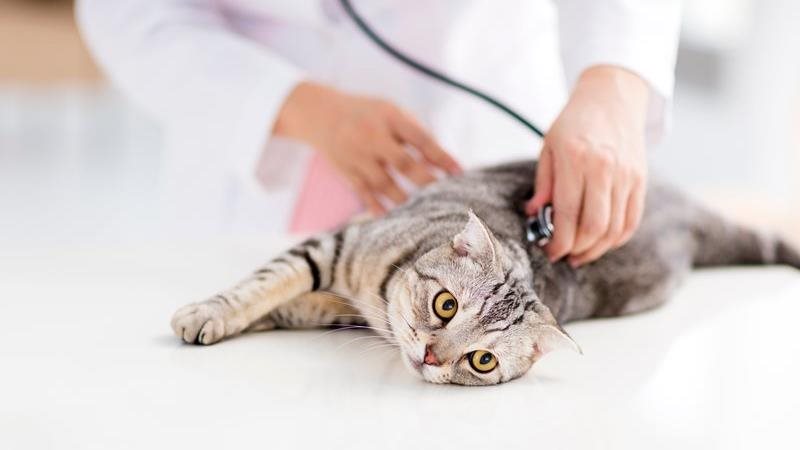
Squish. If you own a cat, you know what that squish might mean. It likely means that you woke up in the middle of the night to get a drink of water, and your bare foot landed on a cold, wet smelly hairball. Yuck.
Or…you see your cat wake up from their afternoon sunbeam nap, serenely walk over to your new white carpet and start yowling and retching convulsively. A slimy greenish hairball lands in the middle of the rug. Your cat looks at you with a satisfied smile and walks back to their sunbeam spot. Yuck.
Let’s look at when hairballs are okay and when they’re not.
What are hairballs anyways? How do cats make them?
Let’s dive into the interesting aspects of cat behaviour and anatomy.
-
The medical name for a hairball is trichobezoar. The term comes the Greek (thrix) prefix “tricho” meaning hair, and the Persion “badzehr” meaning antidote. Hairballs from animals had been used in ancient times as a functional remedy for certain ailments (Doctor’s note: Hairballs are NOT for human consumption!).
-
Cats are meticulous groomers. Cat fur can clump and mat, especially in medium and long-haired breeds. Regular licking of the fur helps to dislodge loose hairs to keep a cat’s coat looking sleek and healthy.
-
Hair is not digestible and either moves through or gets caught in the digestive system (more on this below).
-
You know how a cat’s tongue feels rough when they lick your hand? There are little barbs on the surface of their tongue that help catch loose hair when grooming their coat.
-
Hair gets swallowed and collects in the esophagus, the tube that passes food from the mouth to the stomach. Some hair will pass into the stomach and continue to move through the digestive system and pass out as poop. Hair, saliva, bile and food can accumulate in the esophagus until the stretch in the esophagus causes the cat to expel the material as one mass. This mass is a hairball.
-
Hairballs are not round. Because they “grow” in the esophagus, they tend to be more tubular-shaped. They are usually two to four centimetres long but can be bigger.
My cat is a hairball puker. When is that a problem?
-
Your cat brings up hairballs more than twice a month. While the occasional hairball can be normal for cats, we want to keep track of how often it happens. More frequent hairball vomiting may be an early sign of conditions like inflammatory bowel disease, food allergies and intestinal parasites. Hairball problems that arise in older cats have been associated with intestinal lymphoma, kidney disease, liver conditions and pancreatic disorders.
-
Multiple episodes of hairballs or non-productive retching within a 24-hour period. Clumps of hair can become so matted, either alone or in combination with other non-food objects, that they cause true foreign body obstructions. These cases become emergencies that require immediate treatment. Contact your veterinary practice for advice if your cat has vomited more than two or three times in a row.
-
Cats who retch or cough like they have a hairball may be suffering from something completely different. Cats with asthma and other breathing or heart problems may look like they are bringing up a hairball. If you see your cat cough or retch with nothing coming out and they seem in distress, contact your veterinarian as soon as possible.
-
You see hairballs in the litterbox. Cats who are passing large mats of hair in their stool, or those cats that have trouble passing stool, may be constipated. Your veterinarian can advise whether preventive treatments are enough or whether your cat’s problem should be further investigated.
-
Hairball remedies are not for every cat. Hairball remedies tend to have mineral oil or petroleum jelly as a main ingredient. Both of these ingredients decrease the body’s absorption of fat-soluble vitamins (A, D, E, and K) and other nutrients if used too frequently. We don’t want to cause extra problems for our cats. Always check with your veterinary team before giving your cat home or over-the-counter remedies.
Pet insurance can help with the cost of vet visits
You know your cat better than anyone else. If you see a physical or behavioural change in your cat and think, “Hmmm…I have stepped in three hairballs this past week. That’s unusual for Fluffy,” - you are right to be concerned. Contact your veterinarian and have your pet examined. Frequent hairballs could be a sign of an underlying issue, and early detection is key to keeping your feline friend happy and healthy. Pet insurance can help cover the cost of vet visits, diagnostics, and treatments, giving you peace of mind when your cat needs care.
Get your free, personalized quote today and explore our comprehensive coverage plans! Petsecure has your cat covered.
Dr. Colleen Fisher obtained her Doctor of Veterinary Medicine in 1990 from the University of Saskatchewan. She is the veterinarian for the Canadian Task Force 4 (Manitoba) Urban Search and Rescue Team. Dr. Fisher received her MSc in Clinical Animal Behaviour from the University of Edinburgh in 2019. As Petline's Veterinary Medical Director, she is enthusiastic about sharing knowledge between the insurance professionals and veterinary team members that serve our mutual clients.
